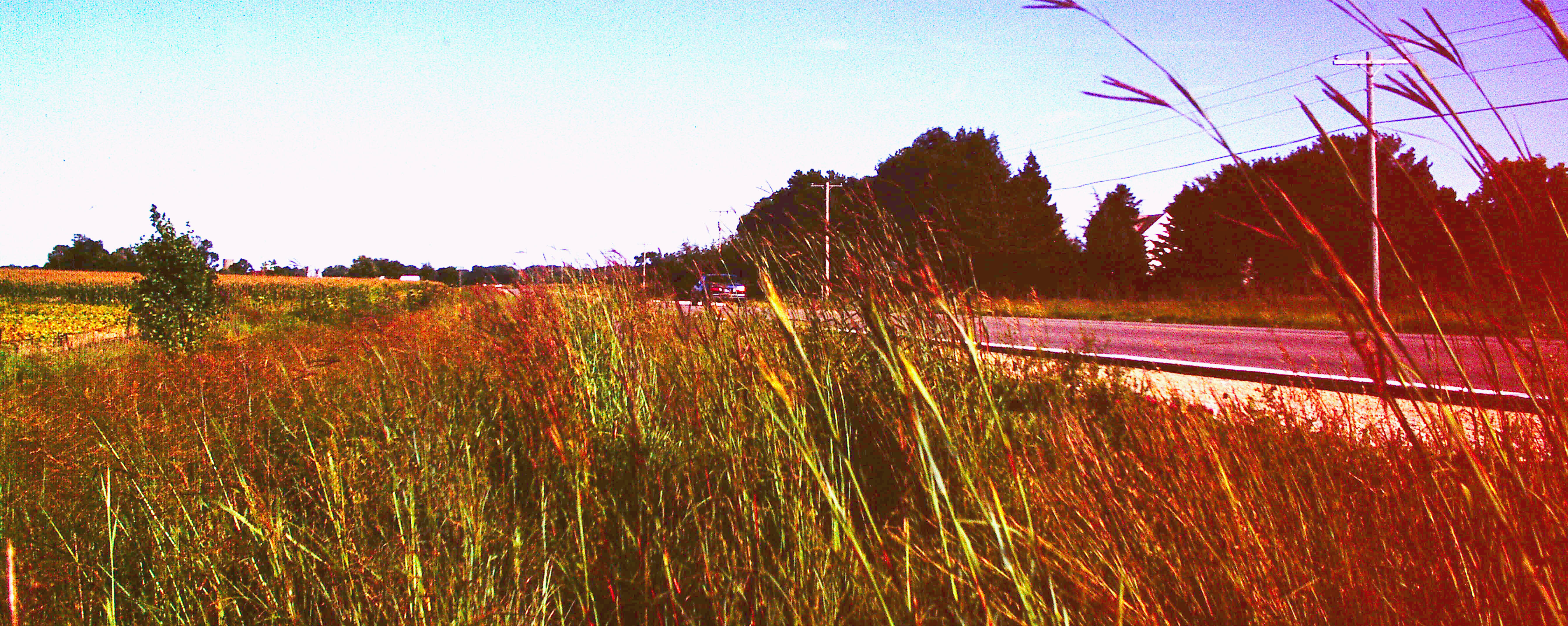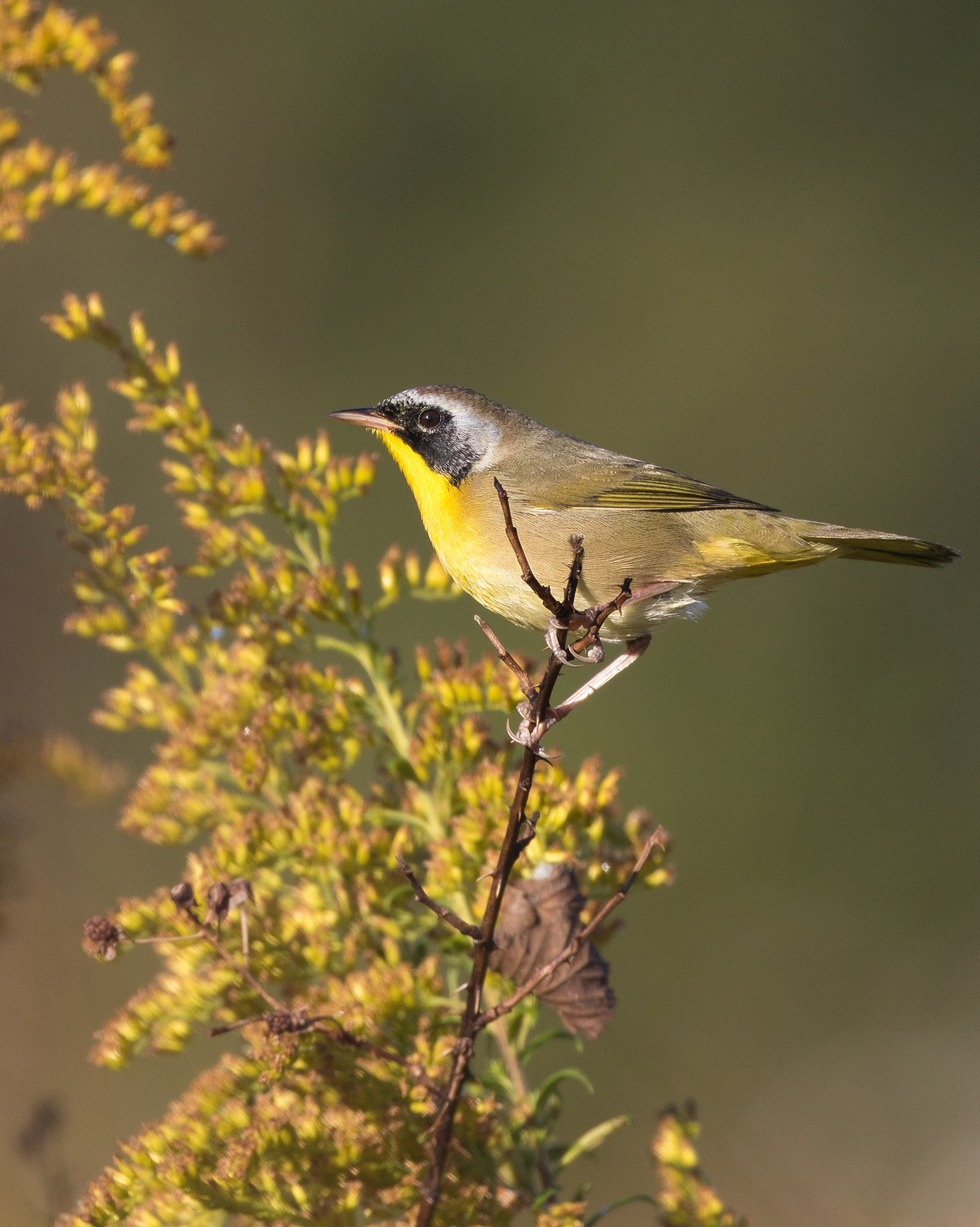Chapter 1: Introduction
Chapter 1: Introduction thompsbb
What is Integrated Roadside Vegetation Management?
Integrated Roadside Vegetation Management (IRVM) is an approach to right-of-way maintenance that combines an array of management techniques with sound ecological principles to establish and maintain safe, healthy, and functional roadsides. The IRVM toolbox includes judicious use of herbicides, spot mowing, prescribed burning, mechanical tree and brush removal, and prevention and treatment of disturbances such as farm field runoff. IRVM’s long-term objective is to reduce roadside maintenance costs by creating stands of durable, perennial native plants.
History
History thompsbb
IRVM techniques were introduced to Iowa in the mid-1980s to protect groundwater and surface water from herbicide contamination. Roadside weed control had previously relied exclusively on herbicides, with most counties employing blanket spraying (also known as “broadcast spraying”) to spray vast swaths of the roadside.
Besides being expensive and potentially harmful, blanket spraying was unsustainable and ineffective. It created openings for weeds to grow by weakening roadside grasses and eliminating beneficial broadleaf species.
At this time, the Iowa Department of Transportation began using native prairie grasses and wildflowers to control erosion and reduce mowing fuel costs, as native plants require less mowing than cool-season grasses. A few county conservation boards were also experimenting with this naturally adapted alternative roadside vegetation.
In 1988, the Iowa Legislature passed legislation adopting parameters for IRVM into state code (Section 314.22). The program's cornerstone was native vegetation in Iowa roadsides. The Living Roadway Trust Fund (LRTF) was created the following year to support state, city, and county roadside projects. For more information about the history of IRVM and LRTF, see the 2018 report by Jean Eells, “Iowa’s Living Roadway Trust Fund and Integrated Roadside Vegetation Management Program.”
IRVM Program
IRVM Program thompsbbGoals
- Maintain a safe and effective road system.
- Provide responsible and sustainable vegetation management.
- Make the most of Iowa’s immense resource: 847,000 acres of roadside.
Basic Tenets
- Prevent soil erosion.
- Control undesirable species in roadsides.
- Avoid reliance on herbicides.
- Plant vegetation best adapted for the roadside.
The Road to Success for County Roadside Management
- Create a full-time roadside manager position.
- Hire a conservation-minded individual to be the roadside manager.
- Give the roadside manager the power to succeed.
The Integrated Toolbox
- Establish a robust and weed-resistant plant community through species diversity. No single species is adaptable to all roadside conditions. IRVM calls for a mix of species suited to the range of growing conditions found in roadsides and the varying climate conditions of Iowa growing seasons. Planting a roadside with only one species is bound to result in gaps that weeds will exploit.
- Use herbicides sparingly. Overuse of herbicides weakens stands of grass, allowing for increased weed invasion. Careless herbicide use also destroys beneficial broadleaf species that outcompete broadleaf weeds by occupying the same niche.
- Use herbicides effectively by spraying smarter with better training, better timing, and better technology.
- Prevent disturbances from adjacent lands, such as farm field runoff and excessive herbicide use, that destroy roadside vegetation and cause weed growth. Collaborate with landowners to reduce these negative impacts.
- Conduct prescribed burns to promote healthy native vegetation. Trained and well-equipped crews use fire every 3–5 years as the most effective means of managing fire-adapted prairie species.
- Mow patches of weeds to reduce seed production and dispersal.
- Use various means to clear brush and trees before they block the vision of motorists, obscure signs, and become dangerous obstructions to errant vehicles.

The Benefits of Native Vegetation
- Native plants are durable perennials that are well-adapted to Iowa’s climate and growing season.
- A diverse native planting adapts to a wide range of soil and moisture conditions.
- Native plants perform well in poor soils.
- Native plant root systems are extensive and provide superior erosion control.
- Deep roots and dense aboveground foliage reduce stormwater runoff by intercepting raindrops, slowing water flow, and increasing infiltration.
- Extensive roots and decaying foliage add organic matter to the soil, which makes it spongy and absorbent, resulting in increased stormwater infiltration.
- Root systems penetrate 6–8 feet on average and sometimes deeper, enabling prairie plants to survive drought and high salt concentrations.
- Extensive root systems deprive weed roots of water, nutrients, and space.
- Tall prairie vegetation casts shade on Canada thistle and other weed seedlings, stalling their growth.
- A wide swath of prairie grass in the right-of-way traps snow and prevents it from blowing in some situations, increasing the snow storage capacity of the ditch and reducing the amount of snow on the road.
- Native roadside plantings provide valuable food and cover for songbirds, game birds, and small mammals.
- Native roadside plantings provide essential habitats for agricultural crop pollinators.
- Native plants add color and natural beauty to the right-of-way.
- Native roadside plantings restore a piece of Iowa’s natural heritage—the tallgrass prairie.
Progress to Date
The Iowa Department of Transportation and half of Iowa’s counties routinely plant native vegetation and have reduced herbicide use to spot-spray application.
Since the early 1990s, native vegetation has been planted to over 40,000 acres of state and 35,000 acres of county road right-of-way. Diverse stands of 30–45 prairie grass and wildflower species—all naturally adapted to local growing conditions—provide stable, low-maintenance roadsides for Iowa.
As of mid-2025, 65 counties had an IRVM plan and 47 counties had a roadside vegetation manager. Counties with either a plan or a roadside vegetation manager collectively managed 420,000 acres of roadside vegetation using IRVM principles. There were also 28 cities with an IRVM plan.
The Challenge
Reaching the goal of having a higher percentage of counties and cities prioritize roadside vegetation is challenging, primarily because officials prioritize addressing other issues rather than considering how their roadside vegetation could be managed differently.
According to the 2020 Federal Land Ownership Report, of Iowa’s total land area of 35,860,480 acres (56,273 square miles), 4.3% is public land. Roadside rights-of-way comprise around 60% of this public land within Iowa (see Figure 1.1), representing a significant area where sustainable management techniques can improve water quality, reduce soil erosion, enhance aesthetics, and provide other public benefits.
